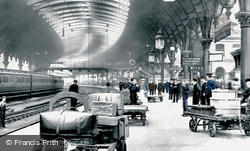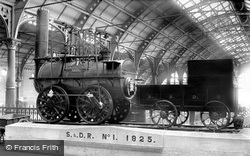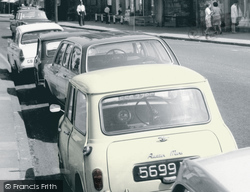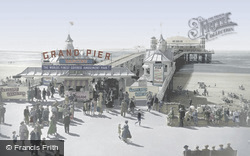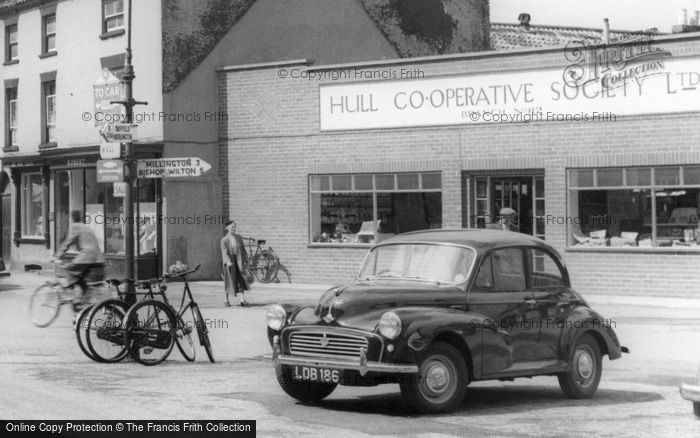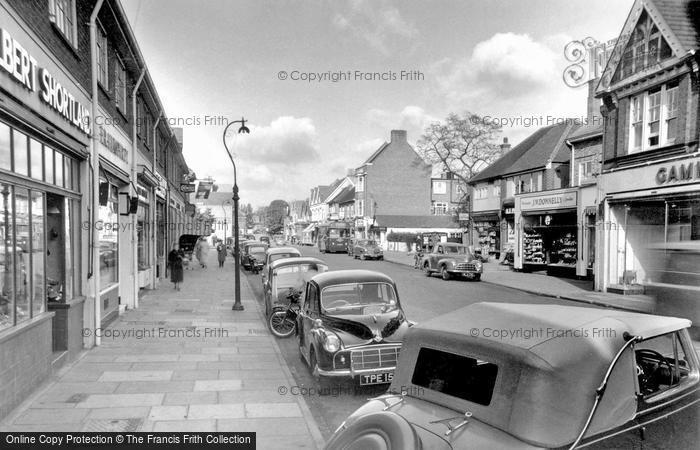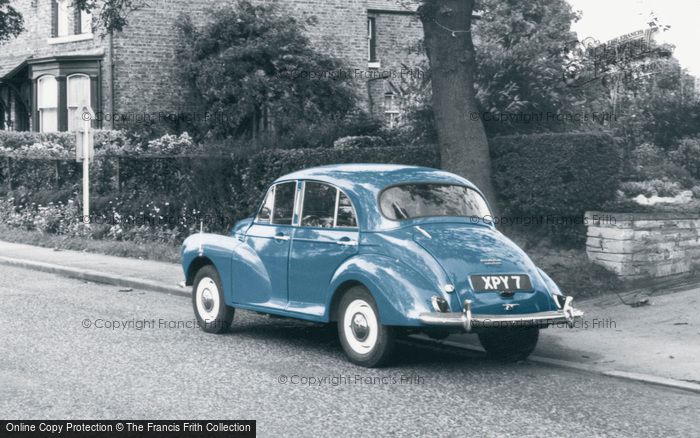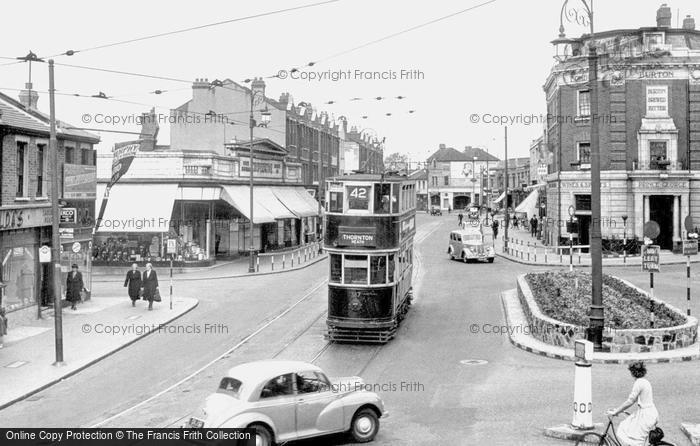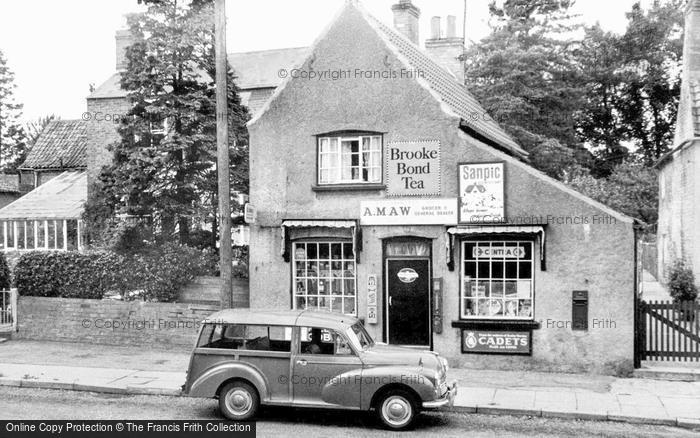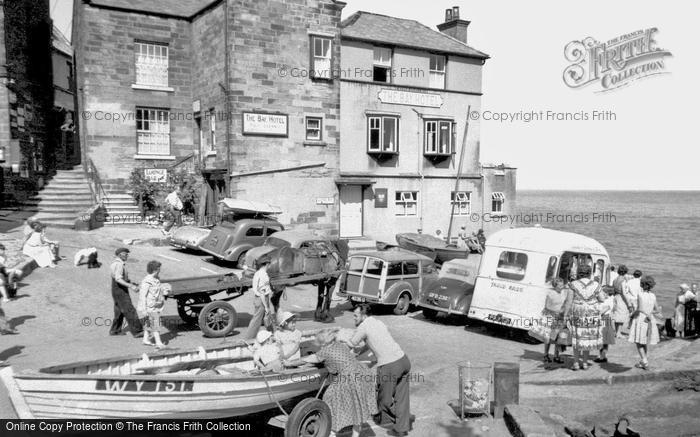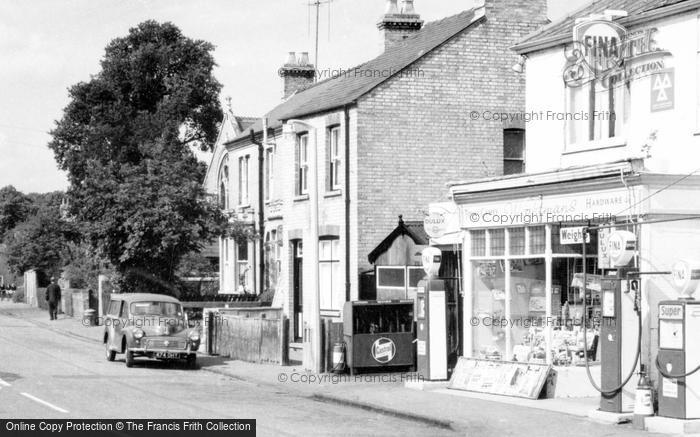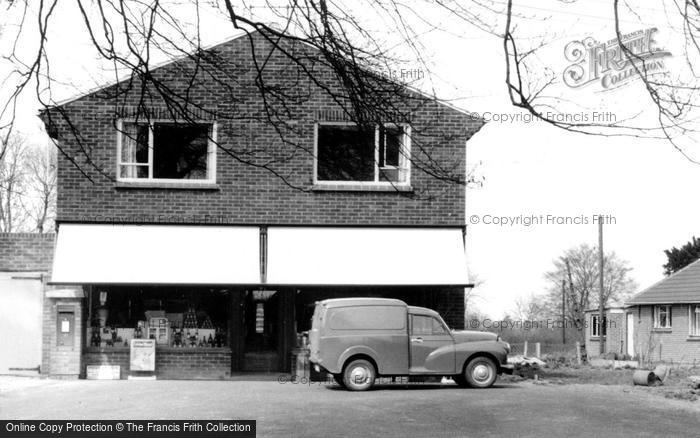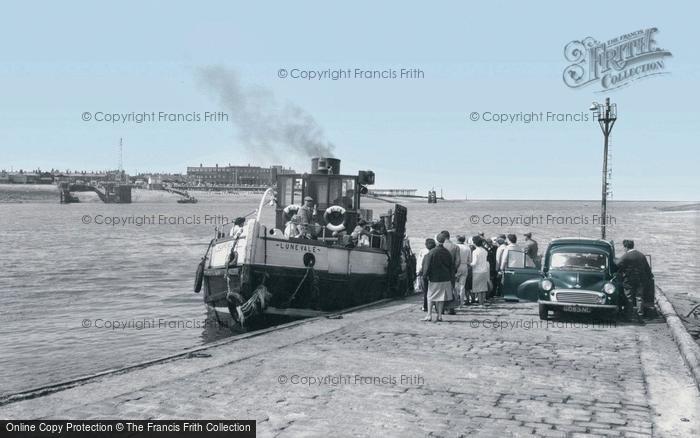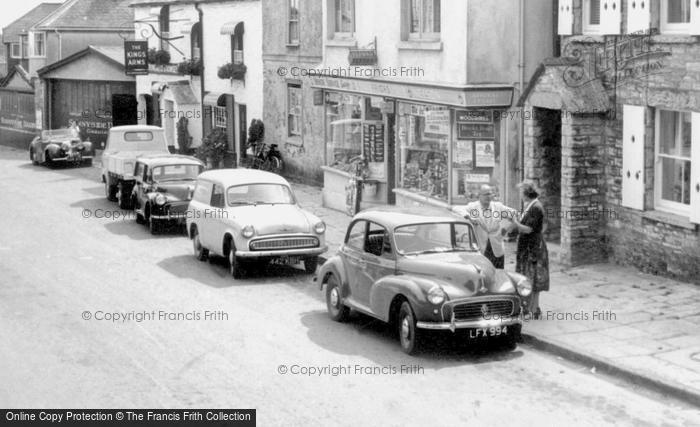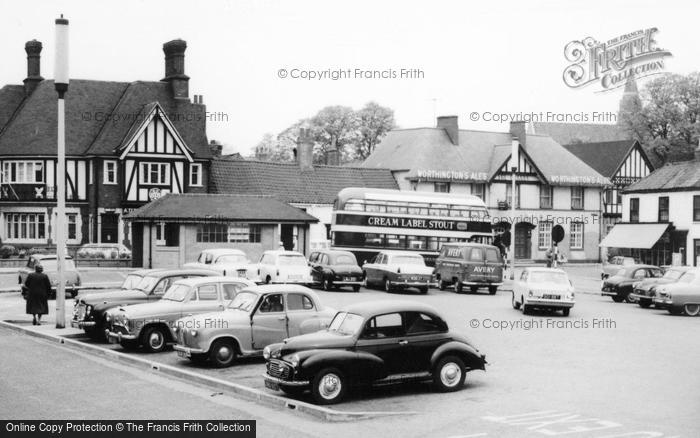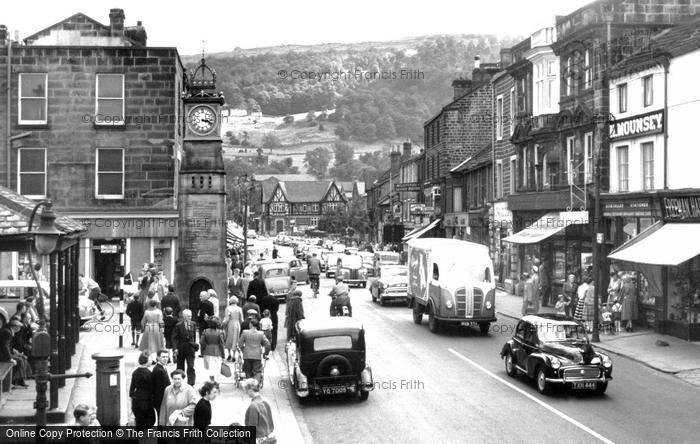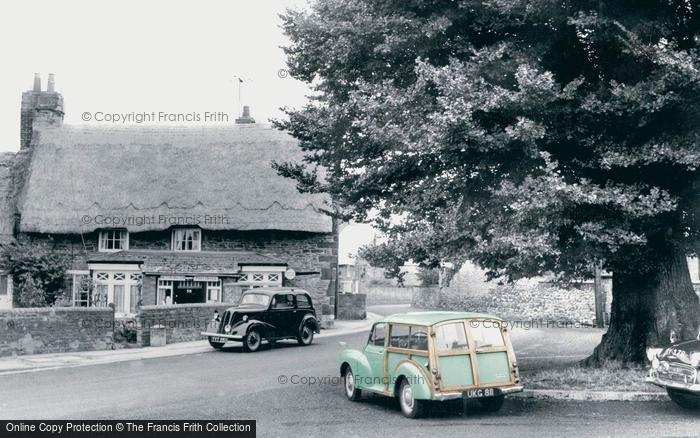The Morris Minor
Published on
April 21st, 2023
Frith photos are full of nostalgic views of old cars, perhaps none more so than the extremely popular Morris Minor, which was launched in 1948 and went on to become the first British-made million-selling car. Read more about this much-loved car in our special blog.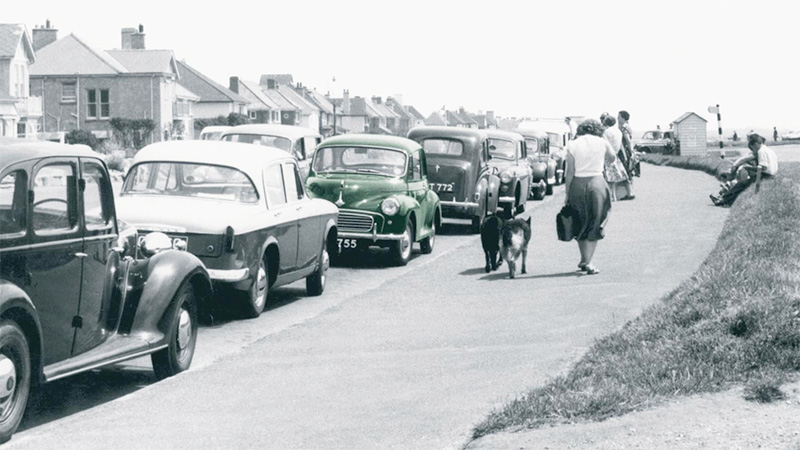 During the Second World War the private car manufacturing industry had been put on hold in the United Kingdom 'for the duration', but by 1942 moves were afoot in preparation for a time when hostilities ceased and the factories of the British car industry would, once again, be busy building vehicles. At the Morris Motors plant at Cowley in Oxfordshire, founded by William Morris (1877-1963), Alec Issigonis had been given the task of designing a new small family car that would replace the Morris Eight Series E. Working with his two engineers, Jack Daniels and Reg Job, he tabled a draft for a revolutionary vehicle. It was to have a unitary body shell as opposed to the traditional body mounted on a rolling chassis. They dispensed with the separate wings and running board, intending that the vehicle's strength was inherent in the one-piece welded monocoque shell. Issigonis's instructions were that the car should have the same dimensions as the Series E and, to make the car look larger, smaller wheels were specified.
During the Second World War the private car manufacturing industry had been put on hold in the United Kingdom 'for the duration', but by 1942 moves were afoot in preparation for a time when hostilities ceased and the factories of the British car industry would, once again, be busy building vehicles. At the Morris Motors plant at Cowley in Oxfordshire, founded by William Morris (1877-1963), Alec Issigonis had been given the task of designing a new small family car that would replace the Morris Eight Series E. Working with his two engineers, Jack Daniels and Reg Job, he tabled a draft for a revolutionary vehicle. It was to have a unitary body shell as opposed to the traditional body mounted on a rolling chassis. They dispensed with the separate wings and running board, intending that the vehicle's strength was inherent in the one-piece welded monocoque shell. Issigonis's instructions were that the car should have the same dimensions as the Series E and, to make the car look larger, smaller wheels were specified.
But it was not only the shape that was to be up to the minute; the engine would be a flat, four-cylinder mounted directly over the front wheels, and the radiator would be fixed to the bulkhead rather than its conventional site behind the grille. The car would have a column gear change and a long bench seat. Finally, up to the war, almost all small cars had solid beam front axles with cart springs, but Issigonis and his team designed a torsion-bar system which would give a better ride, lighter steering and enhanced rigidity. A prototype was built using the old Series E four-cylinder engine with the radiator in the conventional position. The amount of development needed for the proposed engine meant that the new model would not be ready in time for the car's unveiling in 1948 at the Earl's Court Motor Show in London, and it was decided that the reliable yet rather under-powered Series E 918cc side-valve engine should be retained. This engine was bolted to a floor gear-change gearbox which necessitated separate front seats.
Although William Morris wasn't impressed when he saw the prototype in 1945, famously complaining 'It looks like a poached egg – we can’t make that', the Morris Minor went into production. The Series MM Morris Minor was launched on 20th September 1948 at the Earls Court Motor Show at a price of £358 10s 7d. The motoring press was ecstatic when it saw and tested the new Minor. Motor magazine's correspondent wrote that the Minor 'approached perfection'.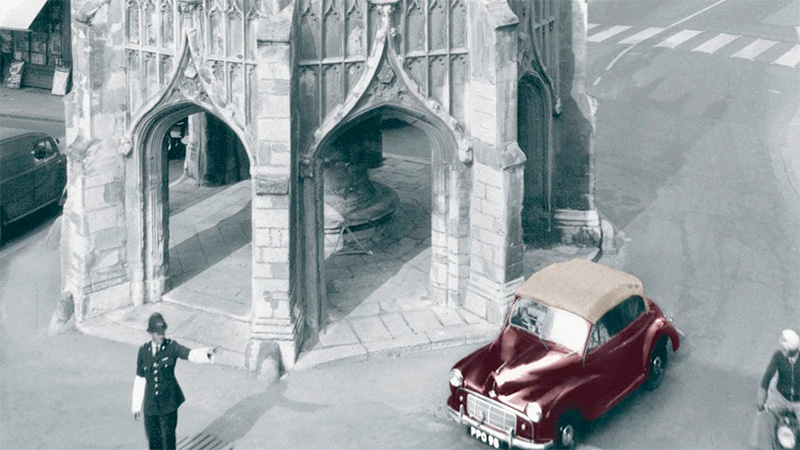 The Morris Minor continued to develop and, in time, the side valve engine was replaced with the BMC A-series overhead valve unit. It became immensely popular and went on to become the first British-made million-selling car. In fact, more than 1.6 million vehicles were manufactured between 1948 and 1972 in three series: the MM (1948 to 1953), the Series II (1952 to 1956), and the 1000 series (1956 to 1971). Initially available as a two-door saloon and canvas-topped Tourer, the range was expanded to include a four-door saloon in 1950, a wood-framed estate car (the Traveller) in 1953 and panel van and pick-up truck variants in 1953.
The Morris Minor continued to develop and, in time, the side valve engine was replaced with the BMC A-series overhead valve unit. It became immensely popular and went on to become the first British-made million-selling car. In fact, more than 1.6 million vehicles were manufactured between 1948 and 1972 in three series: the MM (1948 to 1953), the Series II (1952 to 1956), and the 1000 series (1956 to 1971). Initially available as a two-door saloon and canvas-topped Tourer, the range was expanded to include a four-door saloon in 1950, a wood-framed estate car (the Traveller) in 1953 and panel van and pick-up truck variants in 1953.
Take a drive with us down Memory Lane with this nostalgic selection of historical black and white and colour tinted photographs from The Francis Frith Collection showing this much-loved car in its heyday.
176,000 of these early Morris Minor Series MM were made between 1948 and 1953. This nice two-door example is recognisable by the headlights low down in the 'cheese cutter' grille and the split front bumper. Much to the annoyance of the designer, Issigonis, the later Series II had the headlights higher in the wings to comply with the USA regulations.
This early Morris Minor retains the original type grill but has the later headlights in the wings. During 1951, when there was a shortage of nickel, the grilles were painted instead of being chrome plated. Another identifying feature is the front bumper. When Issigonis designed the car, it was to have had the same width as its predecessor, the Morris 8 Series E, but it was decided that it was too narrow. The bumpers had already been ordered so they were cut in half at the factory and a fillet inserted to accommodate the additional 4 inches. This car has the full width bumper which was introduced in April 1951.
The 'Lymington' ferry discharges its cargo of visitors and Morris Minors at Yarmouth on the Isle of Wight, c1960. The front Minor is a c1958 model and sports a damaged spot light and an AA badge. The second, with its split windscreen, is rather earlier, having been built during the mid 1950s.
This beautiful new four-door Morris 1000 saloon stands proudly in the street. The owners are clearly unsure of the width of the new car as they have attached one of those 'balls on a rod' to the front wing to assist with parking. The car still has trafficators in place of flashing direction indicators and the fine coach line along the waist moulding joining the door handles.
The couple on the pavement on the left of this view seem to be totally unaware of the drama about to happen next to them. Either the 42 tram is about to hit the Minor or the car's driver will have to put on a little unaccustomed acceleration. Meanwhile, the lady on her bicycle will have to dismount or she, too, will become involved in the confusion. Would that we had the next frame on the photographer's film to find out what happened next!
A Series III Minor Traveller waits outside the village store in this quiet Worcestershire village. The owner of this example appears to have been fastidious in keeping the woodwork of its ash frame clean and dry. If neglected and allowed to get damp, the timber and window runners attracted a powerful fungus and moss could jam the sliding window in place. Occasionally, if a Traveller was not used through the winter, a fine crop of mushrooms might sprout in the ash frame!
On this summery day, two children in the Whitby-registered boat are hoping for a ride, whilst others have been attracted by the bells of the ice-cream van. The bored horse waiting with its cart appears to be sampling the peeling lacquer on the ash frame of the Minor Traveller parked next to the convertible Tourer!
Filling stations are no longer allowed to have their pumps directly adjacent to pavements, but in the days of the dependable ash-framed Morris Traveller, it was pretty much the norm.
This beautifully kept Minor Van has been fitted with a driver's door mirror. The regulations said that vans (without windows) must have an exterior mirror as, quite often, the rear view was blocked by large loads or blacked out windows. The body of the van was a separate unit to the cab and the joint was filled with a flexible rubber strip. Some of the later vans were marketed under the Austin banner and a few survive with an Austin badge on the bonnet in place of Morris.
The rather battered Morris Minor van seen here parked outside Betts has had the windows added by the owner. Commercial vehicles did not attract purchase tax and you could make a useful saving by buying a van and converting it into a 'car' by doing this. In theory, if you cut out the panels and added large windows (very small windows were exempt) you would be liable for tax but most people took the risk and got away with it. After the window job, the owner might buy one of the proprietary rear seat kits, but more likely they would take a trip to the yard of the local car breakers and find something second-hand to fit in the carrying space.
The Knott End ferry crossed the Wyre estuary linked Knott End and Fleetwood, which can be seen in the background. The Minor Van parked on the slipway on the right has been 'customised' by the owner who has painted the grill surround and added after-market flashing indicators.
A row of fine British cars can be seen here parked outside the village shop: a Morris Minor 1000, a Hillman Husky Van, a Morris Minor Traveller and a Morris Commercial Pick-up truck, and - in the far background - a 1948 Triumph 2000 Roadster.
Among the most sought-after of the Morris Minor models are examples of the 350 (some sources say 349) special edition lilac-painted, white-upholstered Morris Minor Millions, which were built to commemorate the millionth Minor coming off the production line in 1961. Only 45 or so are known to have survived.
This lovely market town lies at the entrance to Wharfedale in Yorkshire. The bustle of what must have been a market day is evident in the thronging crowds around the clock-tower and the road busy with traffic, including a gleaming Morris Minor in the foreground.
The Minor saloon continued in production until November 1970 whilst the last of the range, a Traveller, was built in April 1971.
This post has the following tags:
Nostalgia.
You may find more posts of interest within those tags.
Join the thousands who receive our regular doses of warming nostalgia!
Have our latest blog posts and archive news delivered directly to your
inbox.
Absolutely free. Unsubscribe anytime.
 During the Second World War the private car manufacturing industry had been put on hold in the United Kingdom 'for the duration', but by 1942 moves were afoot in preparation for a time when hostilities ceased and the factories of the British car industry would, once again, be busy building vehicles. At the Morris Motors plant at Cowley in Oxfordshire, founded by William Morris (1877-1963), Alec Issigonis had been given the task of designing a new small family car that would replace the Morris Eight Series E. Working with his two engineers, Jack Daniels and Reg Job, he tabled a draft for a revolutionary vehicle. It was to have a unitary body shell as opposed to the traditional body mounted on a rolling chassis. They dispensed with the separate wings and running board, intending that the vehicle's strength was inherent in the one-piece welded monocoque shell. Issigonis's instructions were that the car should have the same dimensions as the Series E and, to make the car look larger, smaller wheels were specified.
During the Second World War the private car manufacturing industry had been put on hold in the United Kingdom 'for the duration', but by 1942 moves were afoot in preparation for a time when hostilities ceased and the factories of the British car industry would, once again, be busy building vehicles. At the Morris Motors plant at Cowley in Oxfordshire, founded by William Morris (1877-1963), Alec Issigonis had been given the task of designing a new small family car that would replace the Morris Eight Series E. Working with his two engineers, Jack Daniels and Reg Job, he tabled a draft for a revolutionary vehicle. It was to have a unitary body shell as opposed to the traditional body mounted on a rolling chassis. They dispensed with the separate wings and running board, intending that the vehicle's strength was inherent in the one-piece welded monocoque shell. Issigonis's instructions were that the car should have the same dimensions as the Series E and, to make the car look larger, smaller wheels were specified. The Morris Minor continued to develop and, in time, the side valve engine was replaced with the BMC A-series overhead valve unit. It became immensely popular and went on to become the first British-made million-selling car. In fact, more than 1.6 million vehicles were manufactured between 1948 and 1972 in three series: the MM (1948 to 1953), the Series II (1952 to 1956), and the 1000 series (1956 to 1971). Initially available as a two-door saloon and canvas-topped Tourer, the range was expanded to include a four-door saloon in 1950, a wood-framed estate car (the Traveller) in 1953 and panel van and pick-up truck variants in 1953.
The Morris Minor continued to develop and, in time, the side valve engine was replaced with the BMC A-series overhead valve unit. It became immensely popular and went on to become the first British-made million-selling car. In fact, more than 1.6 million vehicles were manufactured between 1948 and 1972 in three series: the MM (1948 to 1953), the Series II (1952 to 1956), and the 1000 series (1956 to 1971). Initially available as a two-door saloon and canvas-topped Tourer, the range was expanded to include a four-door saloon in 1950, a wood-framed estate car (the Traveller) in 1953 and panel van and pick-up truck variants in 1953.


